Each November, we highlight St Michael’s and Bedford Park’s links to WW1 and WW2, including the stories of the 128 names on our war memorials highlighted in our St Michael & All Angels World War 1 Project, funded by the Heritage Lottery Fund. In ‘Chiswick Women in War’, we tell the stories of three women from our war memorials and WW1 Project – Violet Long, Florence Leach and Mabel Harmer – and four other Chiswick women with remarkable war stories – Molly Rich, Anthea Craigmyle, Lotte Moore and Patricia Davies. Click the red links below to read more about them or see the exhibition panels in the church.
Violet Long OBE of 4 Abinger Road:
The only woman on the St Michael’s WW1 war memorials
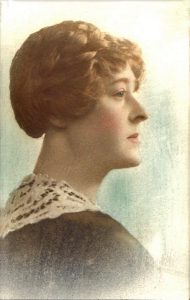 WAAC Chief Controller Violet Beatrice Alice Lambton Long, nee Way, OBE died at sea in the English Channel on 3 August 1918. The Ambulance Transport Ship HMAT Warilda (right) in which she was travelling, on return from an inspection of WAAC units serving American troops in France, was hit by a torpedo from a German U-boat and sank. She was 35.
WAAC Chief Controller Violet Beatrice Alice Lambton Long, nee Way, OBE died at sea in the English Channel on 3 August 1918. The Ambulance Transport Ship HMAT Warilda (right) in which she was travelling, on return from an inspection of WAAC units serving American troops in France, was hit by a torpedo from a German U-boat and sank. She was 35.
After war was declared in 1914, Violet had determined to follow her sister Florence in serving the war effort. She trained in first aid and maternity nursing in a voluntary civilian capacity, forming a local Voluntary Aid Detachment (VAD) and serving the local poor in Chiswick. In 1917, the women’s voluntary bodies, Women’s Legion, St John Ambulance Brigade, VAD and First Aid Nursing Yeomanry (FANY) were reorganised into a paid government service, the Women’s Army Auxiliary Corps. Mrs. Florence Burleigh Leach became its second Chief Controller and appointed her sister Violet as her deputy.
Violet Long had taken a contingent of staff over to France to work with the American Expeditionary Forces and to gather information for a report to her sister on how the QMAAC’s service with the Allied forces was progressing. With her work completed, she managed to get a berth back to England on board Warilda with her orderlies. The night was very dark, but the sea was smooth and visibility was about half a mile, so there could have been little difficulty in recognising that she was a hospital ship. Read eyewitness reports in The Sinking of HMAT Warilda on the WW1 Project website.
Violet Long’s sister, Florence Leach CBE:
Chief Controller of the Women’s Army Auxiliary Corps:
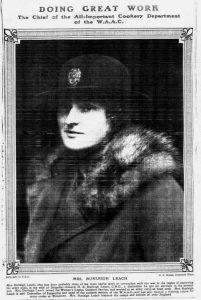 Florence Burleigh Leach, nee Way, started her war career as a cook in a new Military Cookery Section of the voluntary Women’s Legion. According to ‘A Short History of Queen Mary’s Army Auxiliary Corps’:
Florence Burleigh Leach, nee Way, started her war career as a cook in a new Military Cookery Section of the voluntary Women’s Legion. According to ‘A Short History of Queen Mary’s Army Auxiliary Corps’:
“… during a slack moment [in 1915] Miss Barker looked up to see what she later described as ‘a vision of radiant beauty’. A tall fashionably dressed lady stood in the doorway, the sun shining on her golden hair. Her business was apparently to volunteer for a job. Miss Barker was not impressed by the beautiful clothes, carefully manicured hands, nor by the candidate’s experience which appeared to consist of keeping house for husband (then Deputy Director of Personnel Services at the War Office) and for an uncle when Governor of Gibraltar.
“She said that she regretted that cooks could only be recruited through the Labour Exchange and when her visitor turned away she thought she had seen the last of her. To her amazement, within the hour the woman who she had written off as a social butterfly was back with her with her Ministry of Labour card asking to be taken on”.
Florence was offered a post as Head Cook, E Division, Summertown Convalescent Camp, Eastbourne. In 1916 she was put in charge of the Legion’s Cookery Section: she enlisted the help of her sister Violet Long and her office transferred to Violet’s House in Bedford Park. Indefatigable in her work, Florence Burleigh Leach was appointed Controller in Chief of the QMAAC, and appointed her sister Violet Long as her Deputy Controller. In March 1918, Florence was appointed CBE in the Birthday Honours, with Violet’s appointment to OBE at the same time. In 1919 Florence became one of the first Dame Commanders of the Order.
Mabel Harmer of 61 Thornton Avenue:
The only woman on the St Michael’s WW2 war memorial
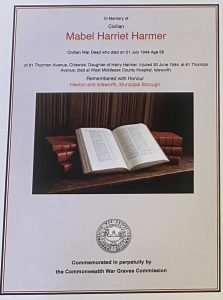 Mabel Harmer was aged 58, a dress maker, and lived at 61 Thornton Avenue. She was injured when a bomb fell on it on 30 June 1944 and died the next day in the West Middlesex Hospital from the injuries she received. History does not relate whether the bomb that killed her was a V1 (like the one that destroyed Chiswick Polytechnic two months later) but the area of damage it caused must have been considerable, judging by the size of area now occupied by the flats where 61 Thornton Avenue previously stood.
Mabel Harmer was aged 58, a dress maker, and lived at 61 Thornton Avenue. She was injured when a bomb fell on it on 30 June 1944 and died the next day in the West Middlesex Hospital from the injuries she received. History does not relate whether the bomb that killed her was a V1 (like the one that destroyed Chiswick Polytechnic two months later) but the area of damage it caused must have been considerable, judging by the size of area now occupied by the flats where 61 Thornton Avenue previously stood.
In contrast to St Michaels’ WW1 War Memorial, only 2 names are listed for 1939-45, Jack B. White R.N. and K. Harmer. Only two K. Harmers are recorded by the Commonwealth War Graves Commission (CWGC) database and neither is reported as having family in Chiswick. Attempts to find out more had persistently drawn a blank until David Beresford discovered some rudimentary church magazines from the war years in which was the following entry from August 1944:
“Please pray for the soul of Mabel Harriet Harmer, who died from injuries received during a recent incident in the parish. Quiet and extremely shy, handicapped by almost total deafness, Mabel Harmer was not known to many of the congregation, but she was a most devout lover of our Lord. She had received Holy Communion in her home on the morning of day the bomb fell upon it. May she and the others who were killed at the same time, rest in peace.”
Mabel Harmer is listed on the CWGC website (and above right) among the civilian casualties.
Lotte Moore of Hammersmith Terrace (1936-2023):
The writer of Lotte’s War, a memoir of her WW2 childhood
Lotte Moore’s early childhood was spent as an evacuee during World War 2. It formed the basis of her best-known book Lotte Moore: A Child’s War, later dramatized as Lotte’s War, and with her husband Chris she gave presentations to thousands of primary school children on what life was like as a child during the war. In a 2018 profile, Bridget Osborne of The Chiswick Calendar wrote: “They lay out the weekly ration of one egg, 4oz sweets, 2oz butter,
12d worth of meat (one chop or its equivalent), one piece of bacon, one piece of cheese and the delights of tinned food such as Tapioca, and try and explain what it was like to live on rations.” You can watch Lotte being interviewed here by Chiswickbuzz.com.
Lotte was the granddaughter of writer, humorist and politician A.P. Herbert, and was used to parties and dinners with famous people from childhood, including Winston Churchill. Taking up her pen in 2006 at the age of 70, she wrote over 25 children’s books as well as novels, poetry collections and a biography – and she spoke at the Chiswick Book Festival’s Local Authors Party at Waterstones in 2019 (see photograph). Lotte Moore died on July 12th this year at the age of 87: her funeral took place at St Nicholas Church, Chiswick by the river.
Anthea Craigmyle and her mother Molly Rich,
whose WW2 letters are illustrated in A Vicarage in the Blitz
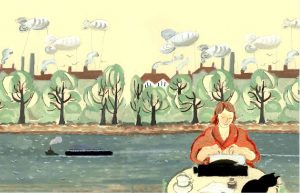 Daily life by the river in Chiswick during World War 2 was recorded in A Vicarage in the Blitz, The Wartime Letters of Molly Rich 1940–1944. Molly was the wife of the Vicar of St Nicholas Church, by the river, and the book is beautifully illustrated by her daughter, the artist Anthea Craigmyle, who lived on Chiswick Mall. It was published 10 years ago in 2013 and an image appears on the Chiswick Timeline mural at Turnham Green tube station. An interview with Anthea was published on ChiswickW4.com in 2013 when the book was launched. You can watch Anthea being interviewed here by Chiswickbuzz.com.
Daily life by the river in Chiswick during World War 2 was recorded in A Vicarage in the Blitz, The Wartime Letters of Molly Rich 1940–1944. Molly was the wife of the Vicar of St Nicholas Church, by the river, and the book is beautifully illustrated by her daughter, the artist Anthea Craigmyle, who lived on Chiswick Mall. It was published 10 years ago in 2013 and an image appears on the Chiswick Timeline mural at Turnham Green tube station. An interview with Anthea was published on ChiswickW4.com in 2013 when the book was launched. You can watch Anthea being interviewed here by Chiswickbuzz.com.
“The letters were written to Otto, a 20-year-old refugee from Vienna who came to live with us at Chiswick Vicarage early in 1939 and quickly became part of the family,” writes Anthea in the introduction. “Fourteen months later, as Hitler invaded Europe, Otto was arrested as an Enemy Alien and sent to internment camps in England and then Australia. Otto was considered a fifth child by our mother, who wrote to him throughout the war. She described the life of an ordinary family living in a part of London that suffered badly during the Blitz. While trying to keep the household clean and clothed and doing a great deal of parish work, our mother dug the lawn to grow vegetables, created an air-raid shelter in the cellar and helped the Women’s Voluntary Service and the Mothers’ Union, often after a long night of fire-watching. She managed all the cooking with wartime rations and did the shopping on an old racing bike.”
Patricia Davies of Grove Park, 100 this year, won the Légion d’Honneur
– Codebreaking Sisters: Our Secret War explains why
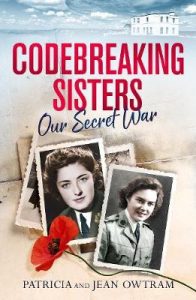 Patricia Davies (nee Owtram) and her sister Jean Argles became Sunday Times bestselling authors when they published Codebreaking Sisters describing their secret wartime work. As a teenage interceptor, Pat Davies listened to radio transmissions in both German and encrypted code as part of the Special Operations Executive war effort, transcribing and decoding the messages and passing them on to Bletchley Park. After the war, she worked as a TV producer, journalist and author. She was also an organiser of the Chiswick Women’s Institute and a patron of the Sea Cadets. Pat celebrated her 100th birthday in June this year – see ChiswickW4.com report.
Patricia Davies (nee Owtram) and her sister Jean Argles became Sunday Times bestselling authors when they published Codebreaking Sisters describing their secret wartime work. As a teenage interceptor, Pat Davies listened to radio transmissions in both German and encrypted code as part of the Special Operations Executive war effort, transcribing and decoding the messages and passing them on to Bletchley Park. After the war, she worked as a TV producer, journalist and author. She was also an organiser of the Chiswick Women’s Institute and a patron of the Sea Cadets. Pat celebrated her 100th birthday in June this year – see ChiswickW4.com report.
Throughout the war, the two Owtram sisters wrote letters to each other. Both had signed the Official Secrets Act and been involved in top secret work, so it was not until the 1960s and 1970s, 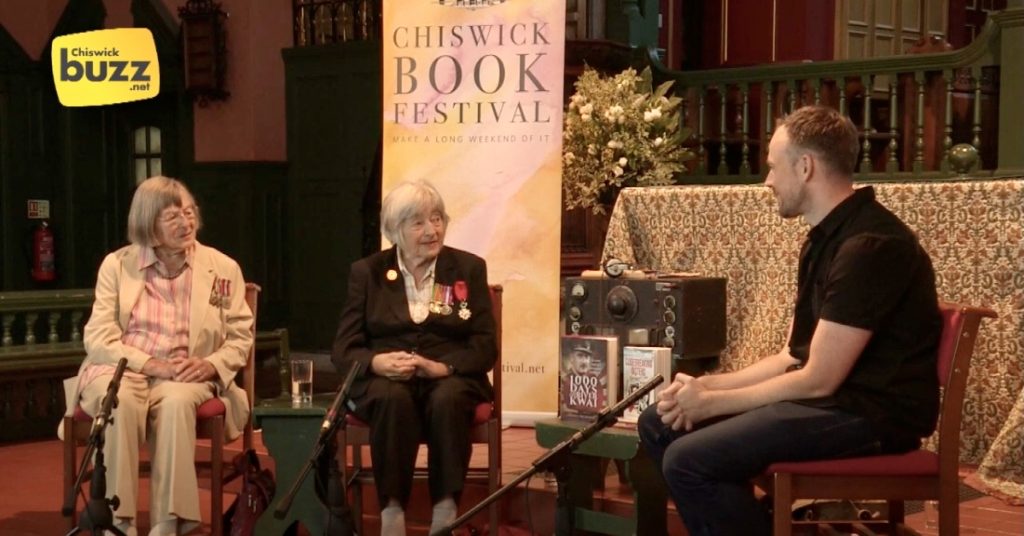 and after the publication of material about the work of Bletchley Park, that they talked to each other about their war work and discovered the similarities in their war experiences. Their parents never knew anything about their secret war work. The sisters spoke at the 2020 Chiswick Book Festival (photo below) and you can watch the ChiswickBuzz recording on YouTube. Sadly Jean died earlier this year shortly before publication of their new book Century Sisters, which Pat spoke about at the 2023 Chiswick Book Festival. Still giving talks, she wrote: “It usually raises a laugh when I tell them that I may be the only old lady in Chiswick who knows how to use a Sten gun.”
and after the publication of material about the work of Bletchley Park, that they talked to each other about their war work and discovered the similarities in their war experiences. Their parents never knew anything about their secret war work. The sisters spoke at the 2020 Chiswick Book Festival (photo below) and you can watch the ChiswickBuzz recording on YouTube. Sadly Jean died earlier this year shortly before publication of their new book Century Sisters, which Pat spoke about at the 2023 Chiswick Book Festival. Still giving talks, she wrote: “It usually raises a laugh when I tell them that I may be the only old lady in Chiswick who knows how to use a Sten gun.”
The St Michael’s Remembrance archive was created by David Beresford, our former churchwarden and assistant archivist, who died in December 2022.
Watch him being interviewed here by Chiswickbuzz.com.
